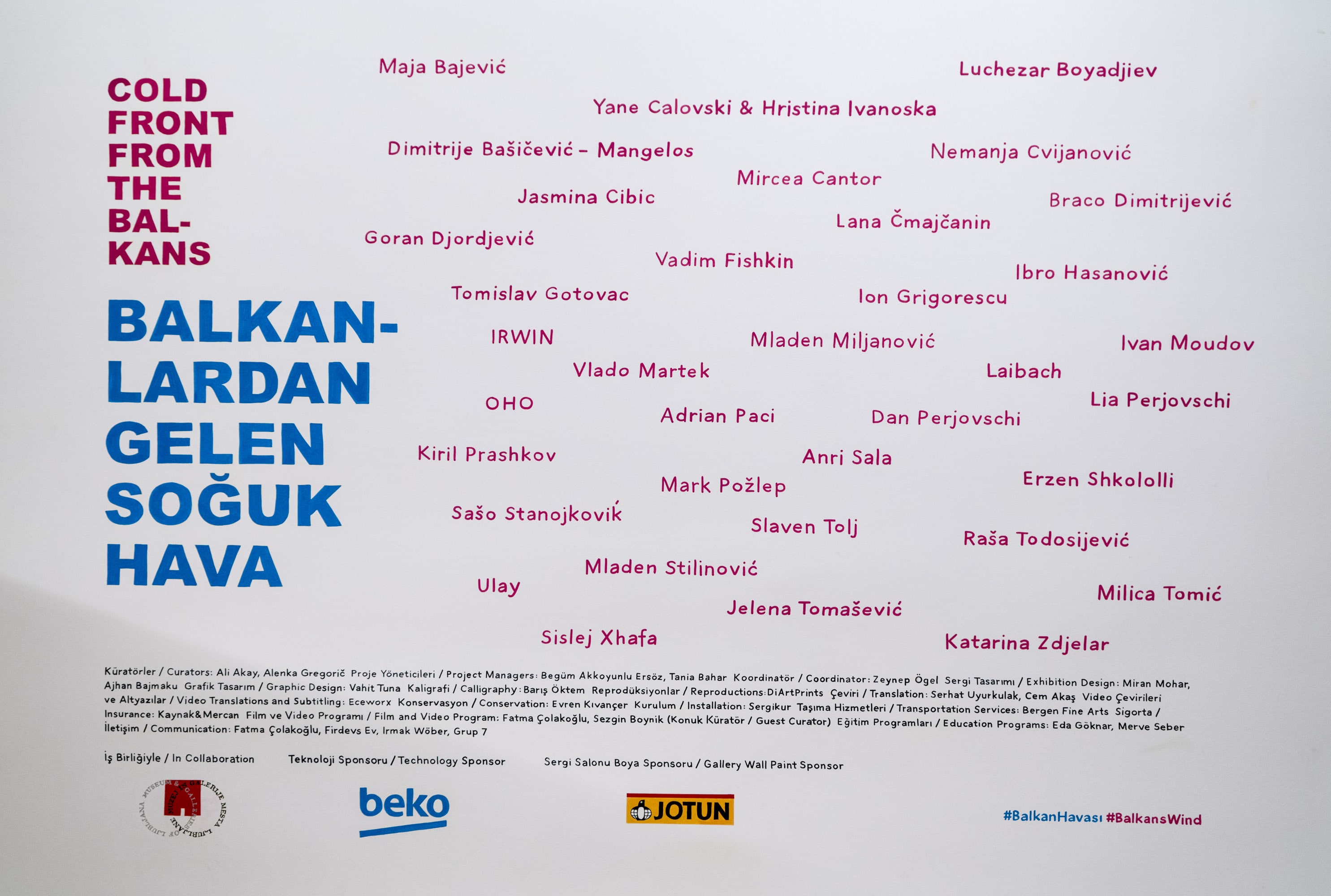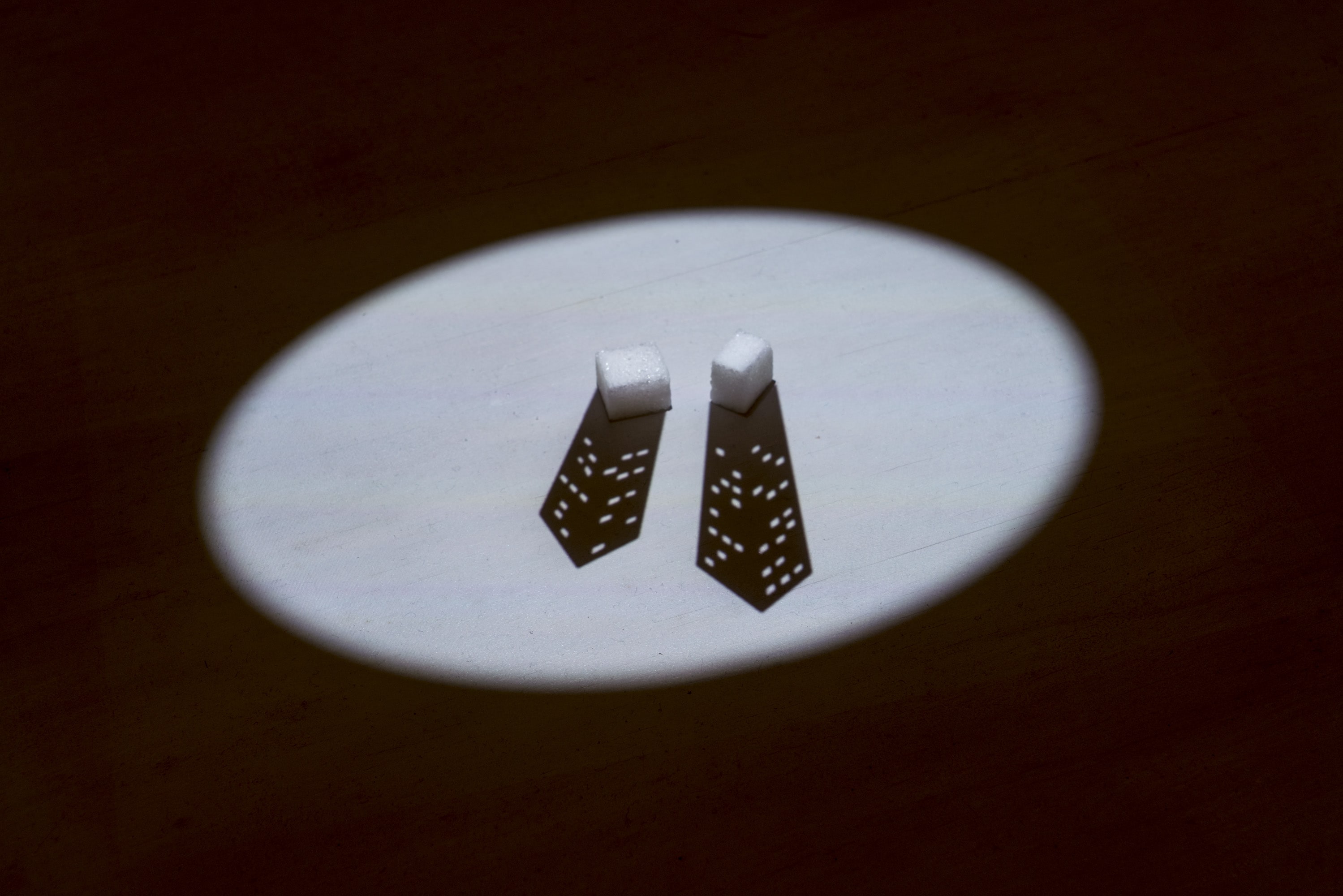07 December 2016
Pera Museum’s Cold Front from the Balkans exhibition curated by Ali Akay and Alenka Gregorič brings together contemporary artists from Albania, Bosnia and Herzegovina, Bulgaria, Croatia, Kosovo, Macedonia, Montenegro, Romania, Serbia and Slovenia.

The exhibition focuses on different generations of artists and art groups from the Balkan region. The exhibition avoids the usual unflattering political connotations the region’s name inevitably brings up but instead focuses on a natural phenomenon — the wind. The exhibition title refers to the well-known saying in Turkish: “Cold wind blowing from the Balkans” which conveys winter’s arrival and is most commonly used in television weather reports.
Following this very common idiom in Turkey, the exhibition brings together the artists who deal with their immediate surroundings, reacting and commenting on their social, political and cultural milieu, such as Maja Bajević, Braco Dimitrijević, Vadim Fishkin, IRWIN, Laibach, Mladen Miljanović, Ivan Moudov, OHO, Dan Perjovschi, Mladen Stilinović, Ulay, and Sislej Xhafa amongst others. In the selection of the striking works made in different mediums ranging from video to photography, drawing to installation; it is aimed to create a new dialog between the Balkan artists from different generations and to provide a new point of view for the spectator.
The exhibition consists of 6 sections. Throughout the exhibition, we will be sharing detailed information about the sections and the artists on our blog. The first post is about “Symbols”!
- symbols of ideology
Ideology works as an illusion through symbols. Ideology has no truth but only symbols, and it is through them that ideology stands and expands its impact area. Ideology impacts and is impacted upon. In that sense, it can be imposed externally, which turns it into propaganda, but it can also be adopted internally. This happens when people accept impositions as their willful choices, which is all the more impressive, for external impositions are susceptible to being more quickly rejected through an oppositional attitude.
Gotovac
Cvijanović
Todosijević
IRWIN

Does power work top-down or bottom-up? For ages, it has been widely asserted and maintained that power operates top-down. Today, however, historians show that since the ancient Greece, the top-down power model has been shaped by the “influence of the people.” The people make their voice heard as a will. This appears in Rousseau as the contractual model, while in Nietzsche it is the natural will to power, and the latter finds its expression as an art form, since every being is open to a type of existence. Beings are characterized through these actions. The will to power emerges as a problem of potency and success increases the amount of joy, whereas loss leads to sorrow and darkens the world.
Ulay
Zdjelar
Cibic
Fishkin

Cold Front From the Balkans exhibition took place at Pera Museum between 10 November 2016 - 07 May 2017.

Published as part of Pera Learning programs, “The Little Yellow Circle (Küçük Sarı Daire)” is a children’s book written by Tania Bahar and illustrated by Marina Rico, offering children and adults to a novel learning experience where they can share and discover together.
Tuesday - Saturday 10:00 - 19:00
Friday 10:00 - 22:00
Sunday 12:00 - 18:00
The museum is closed on Mondays.
On Wednesdays, the students can
visit the museum free of admission.
Full ticket: 300 TL
Discounted: 150 TL
Groups: 200 TL (minimum 10 people)